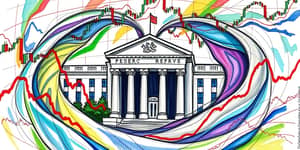Political developments shape the landscape of global finance, creating waves of volatility and long-term shifts in asset valuations. Investors and policymakers alike must understand these forces to navigate uncertainty and seize opportunities.
Understanding Political Risk and Market Volatility
Financial markets are inherently sensitive to political developments. When unexpected policy announcements occur—such as tax reforms or trade tariffs—markets can react within seconds. Equity prices may experience rapid swings in asset prices, while bond yields adjust in anticipation of future economic conditions.
The phenomenon of political risk influencing investor sentiment often results in heightened volatility. Fear and uncertainty lead to risk aversion, prompting sell-offs in equities and a surge in demand for safe-haven assets like government bonds and gold. Over time, these reactions can fade as fundamentals and corporate earnings regain prominence.
Direct Market Impact Mechanisms
Political events can influence asset prices through several channels:
- Regulatory and policy shifts: Changes in environmental rules or industry deregulation directly affect profitability and investment decisions.
- Government stability and regime change: Contested elections or coups increase default risk for sovereign debt, widening credit spreads.
- Geopolitical tensions: Wars or diplomatic stand-offs can disrupt trade flows and energy supplies, triggering sectoral sell-offs.
For instance, when a government unexpectedly nationalizes an industry, share prices of companies in that sector often plunge as investors reassess future earnings.
Types of Political Events That Move Markets
Several categories of political events tend to have outsized effects on financial markets:
- Elections and referendums – Voting outcomes introduce uncertainty about future fiscal and monetary policies.
- Policy reforms – Tax hikes or labor law changes influence corporate margins and consumer spending.
- Geopolitical shocks – Conflicts, sanctions, and treaty signings reshape global trade dynamics.
In democratic systems, elections often lead to pre-vote positioning in markets. Traders place bets on sectors likely to benefit from potential winners’ platforms, provoking short-term price distortions that reverse once results are clear.
Historical Case Studies
Examining past events illuminates how political developments have historically moved markets:
During the Brexit vote, global equity markets shed over $2 trillion in value within days. The sterling currency fell sharply, reflecting investor fear and uncertainty about the future of UK-EU relations.
Similarly, the 2020 US election saw markets gyrate on expectations of fiscal stimulus and regulatory changes. Volatility peaked when vote counts paused, underscoring how uncertainty drives trading volumes and price swings.
Quantifying Political Uncertainty
Researchers use metrics like the Policy Uncertainty Index to gauge investor anxiety. Historical data shows that spikes in this index from 1985 to 2025 align closely with short-lived equity downturns, followed by recoveries as clarity returns.
Bond markets also reflect political risk. Yields on sovereign debt rise when investors demand compensation for potential default or restructuring in unstable regimes.
Global Interconnectedness and Spillover Effects
Today’s markets are more interconnected than ever. A policy shock in one region can cascade into others through trade channels and cross-border capital flows. For example, US-China trade tensions not only roiled Asian equities but also dampened sentiment in European markets.
Moreover, shifts in US Fed policy often reflect domestic politics but have global ramifications, influencing emerging-market borrowing costs and currency valuations.
Investor Strategies During Political Volatility
To navigate turbulent periods, investors may adopt several prudent approaches:
- Diversification across asset classes and geographies to mitigate idiosyncratic political risk.
- Maintaining liquidity reserves so positions can be adjusted without forced selling.
- Focusing on fundamentally strong sectors that can weather policy shifts.
Attempting to time the market around every political event can backfire, as volatility often subsides once outcomes become certain and markets recalibrate to underlying economic realities.
Conclusion: Embracing Uncertainty with Discipline
Political events will continue to inject volatility into financial markets. While these episodes can create disruptive price movements and test investor resolve, they also offer opportunities for those prepared with a clear strategy and diversified holdings.
By understanding the mechanisms through which politics affects asset prices, quantifying uncertainty with reliable metrics, and maintaining a disciplined, long-term perspective, investors can turn short-term turbulence into pathways for growth.
References
- https://www.pimco.com/us/en/resources/education/how-political-factors-may-influence-markets
- https://www.investree.co.th/en/knowledge-hub-detail/political-instability-investment-opportunities
- https://privatebank.jpmorgan.com/nam/en/insights/markets-and-investing/how-do-geopolitical-shocks-impact-markets
- https://forbesfavafp.com.au/insights/how-political-events-affect-the-markets/
- https://www.fnb.co.za/blog/investments/articles/HotTopic-20240507/?blog=investments&category=Latest&articleName=HotTopic-20240507
- https://www.ebsco.com/research-starters/history/us-stock-market-crashes
- https://www.gam.com/en/our-thinking/investment-opinions/what-to-focus-on-now
- https://finhabits.com/global-events-and-their-impact-on-the-stock-market/










